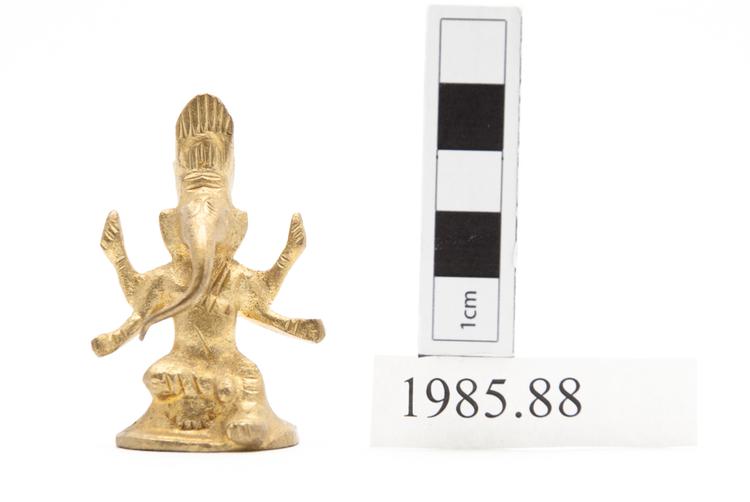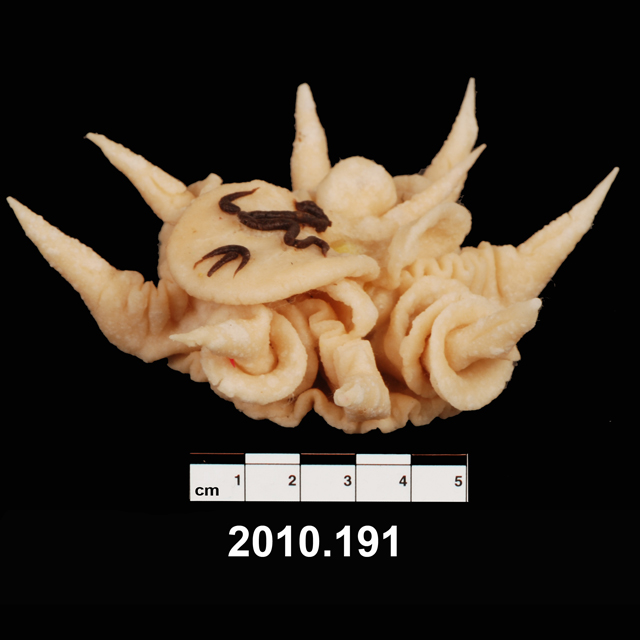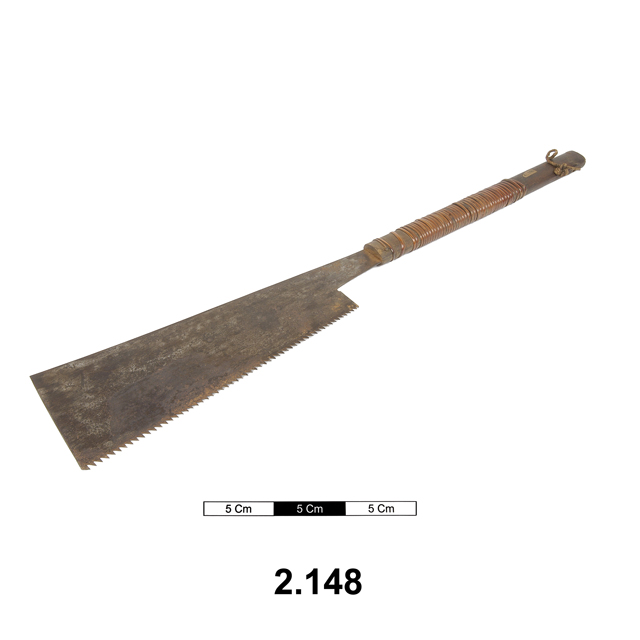
'Ingri' container. Milk and blood container made from a long gourd decorated with carved and painted designs of a gazelle, giraffe, birds etc. Bead decorated leather handle and lid. Maasai
Research by 'Rethinking Relationships' project researcher, Ken Simiyu: This object belongs to Maasai community and it is known as Ingri. In its modern interpretation it is milk among the different milk gourd that the Maasai cherish as one of their dietary regime. The Ingri is among the many different types of gourds that surround the Maasai culture. The object is made a fleshy trailing plant from the family of the pumpkin. When it reaches maturity, it is plugged from the main tree and its insides including seeds and soft tissues are hollowed out, after which it is left to dry. Depending on the creativity of the maker, the Ingri could be decorated with colourful beads aging from blue, red, green and yellow. The beads are attached to a leather strap which is sewn permanently on the gourd. It is culturally significant because it was used as a milk container which plays a huge role in Maasai diet. Milk is drunk raw or soured, drunk in tea, or turned into butter milk is a part of almost every meal for Maasai herders. There are other objects that could be used alongside the Ingri especially the wooden stirrer which was pivotal in cleaning and stirring the milk to achieve a content smooth taste. Other objects that are used alongside the Ingri include the leather straps and beads. In the modern dispensation, the Ingri has undergone some variations such that there are those that are metallic while other are plastics. The Ingri is also losing its traditional significance of keeping milk due to technological, cultural and religious changes that are taking place. Largely, many of the variations that are being made are largely for aesthetic and decorative purpose rather than as a food preparation and preservation object. In the case of this object it is a real object rather than a tourist object. There are variations in term of sizes, for smaller sizes it was meant for children while bigger sizes are meant for adults. The object was largely used by women and young girls. The usual chores surrounding the object includes, daily cleaning using a curved stick from the palm tree. Also, beading was done occasionally to ensure that the object remains nice to look at. The object could be repaired by using special adhesives to seal cracks and crevices. However, if the damage is huge, the object was replaced by many available.
Usually decorated with traded beads and with cowrie shells which symbolise fertility. Milk is carried and stored in the gourds to be drunk while travelling, and the gourds are fitted with caps, which can also serve as cups, and fastened with leather straps around the hand when milking.






